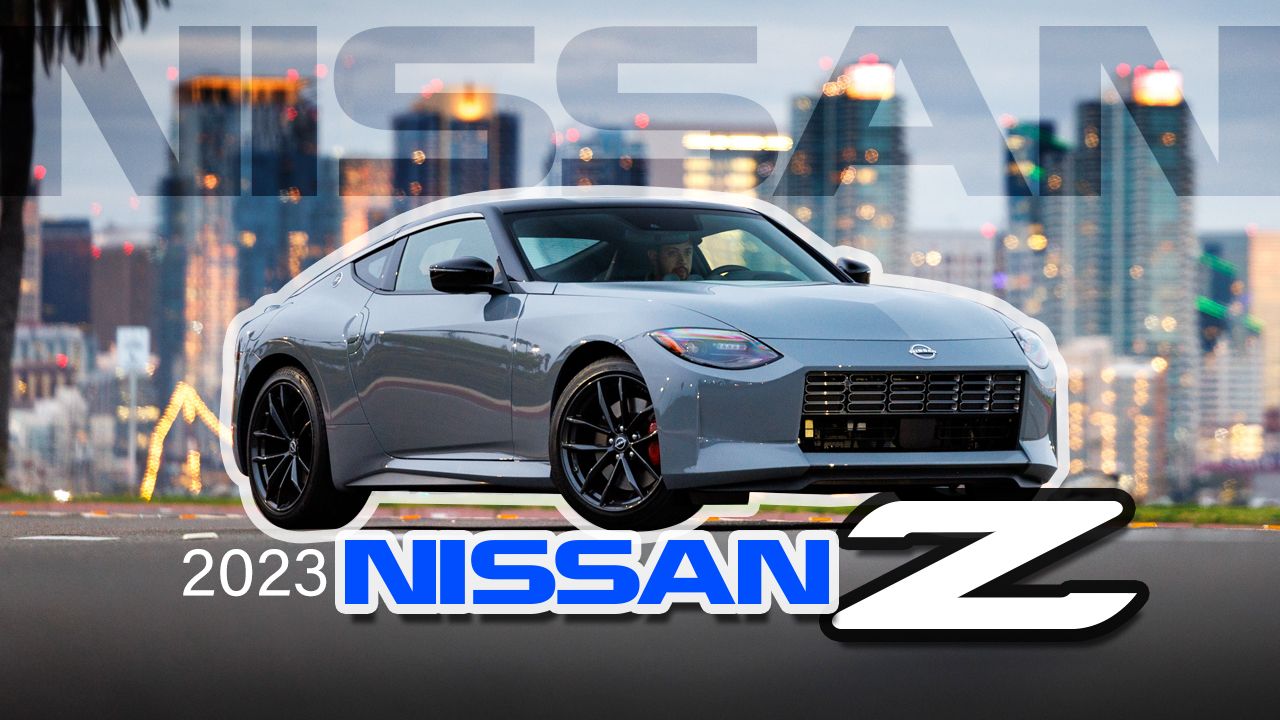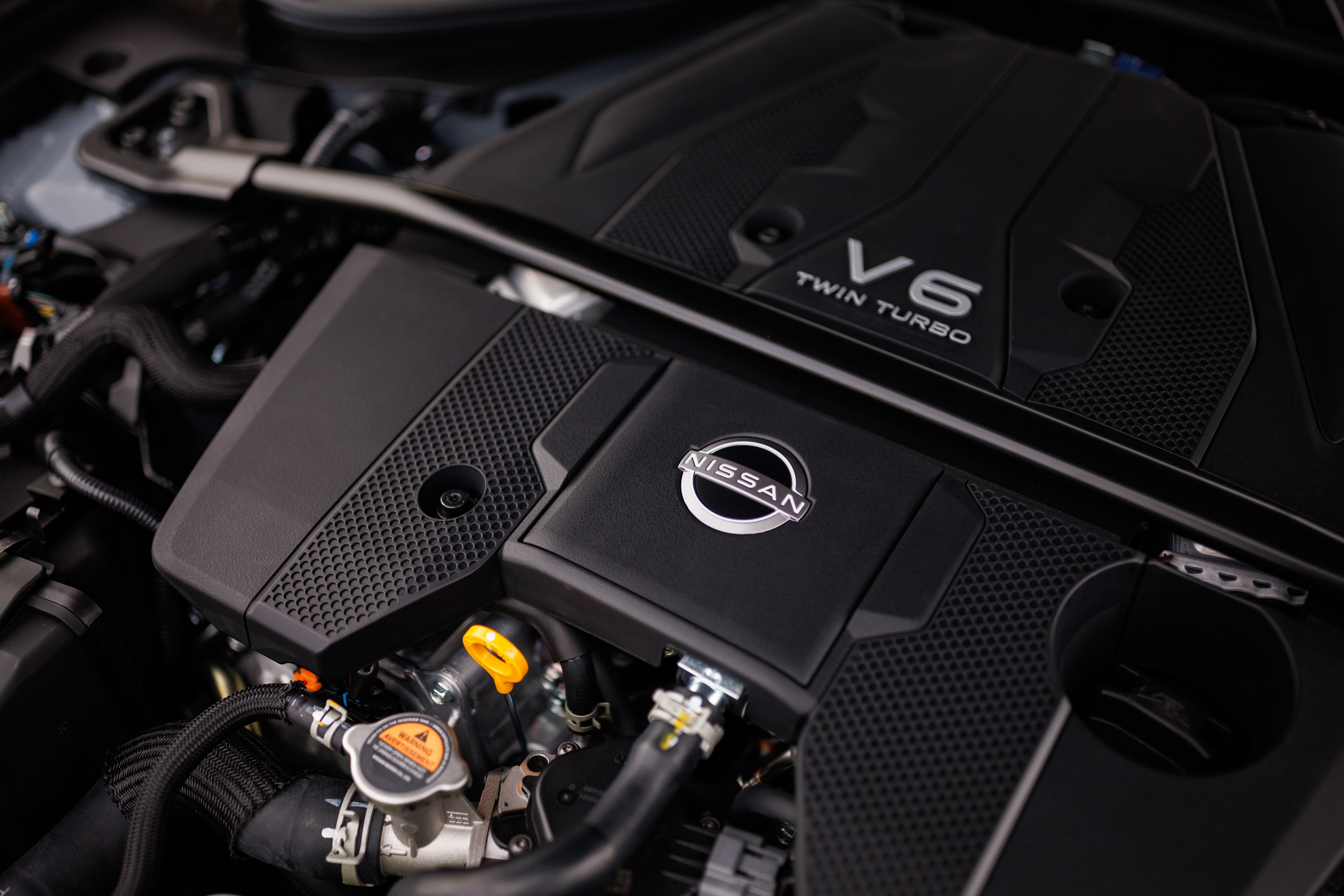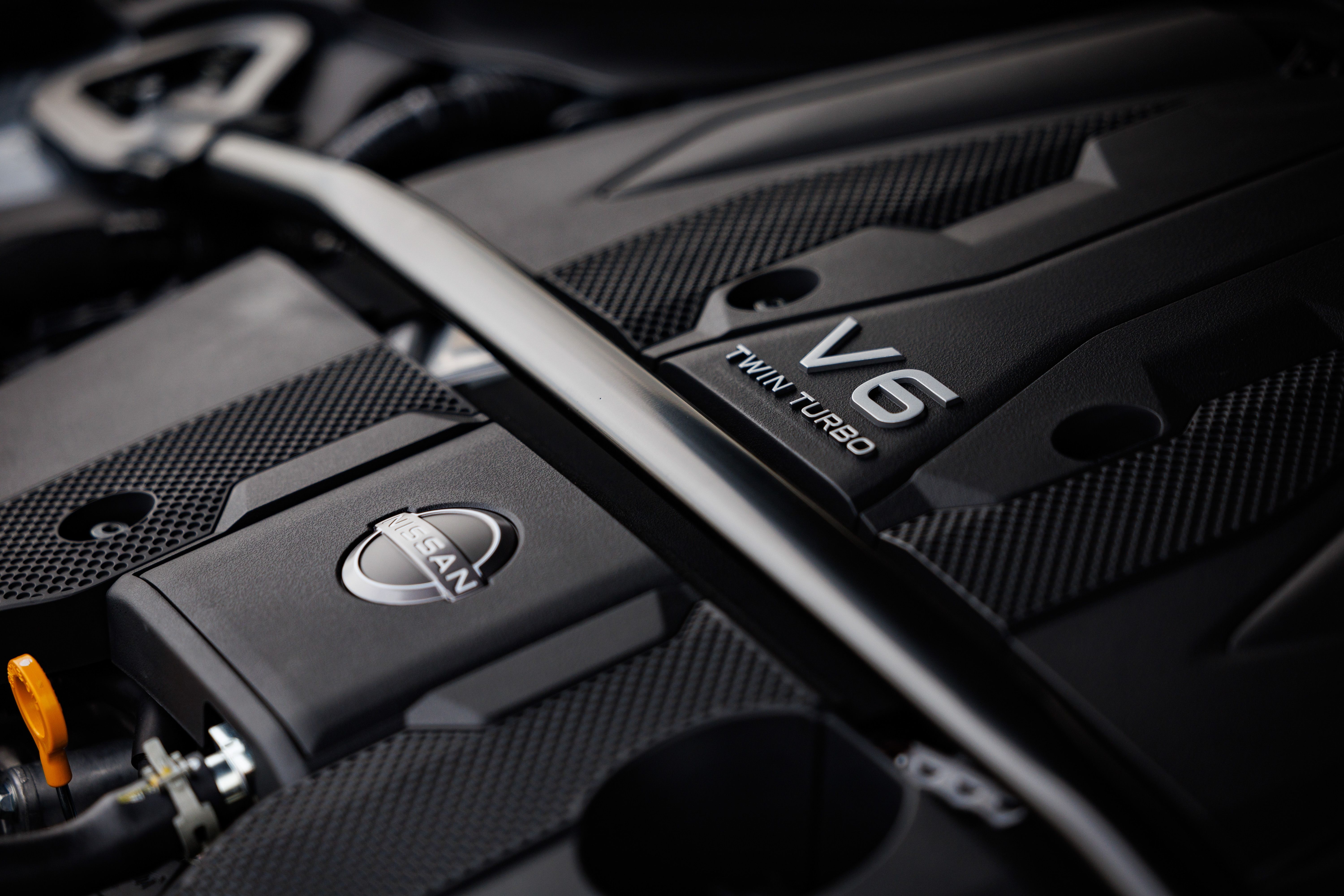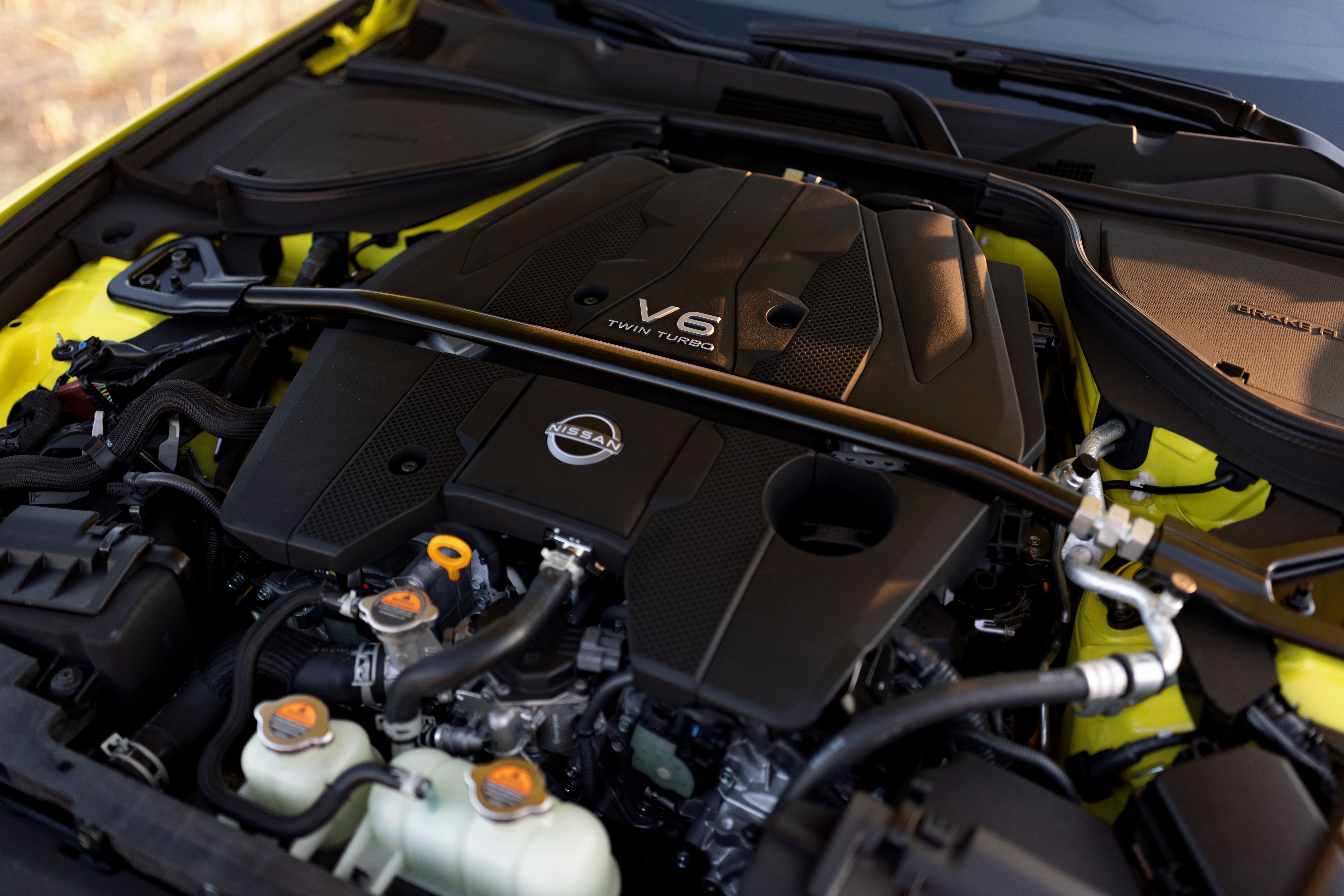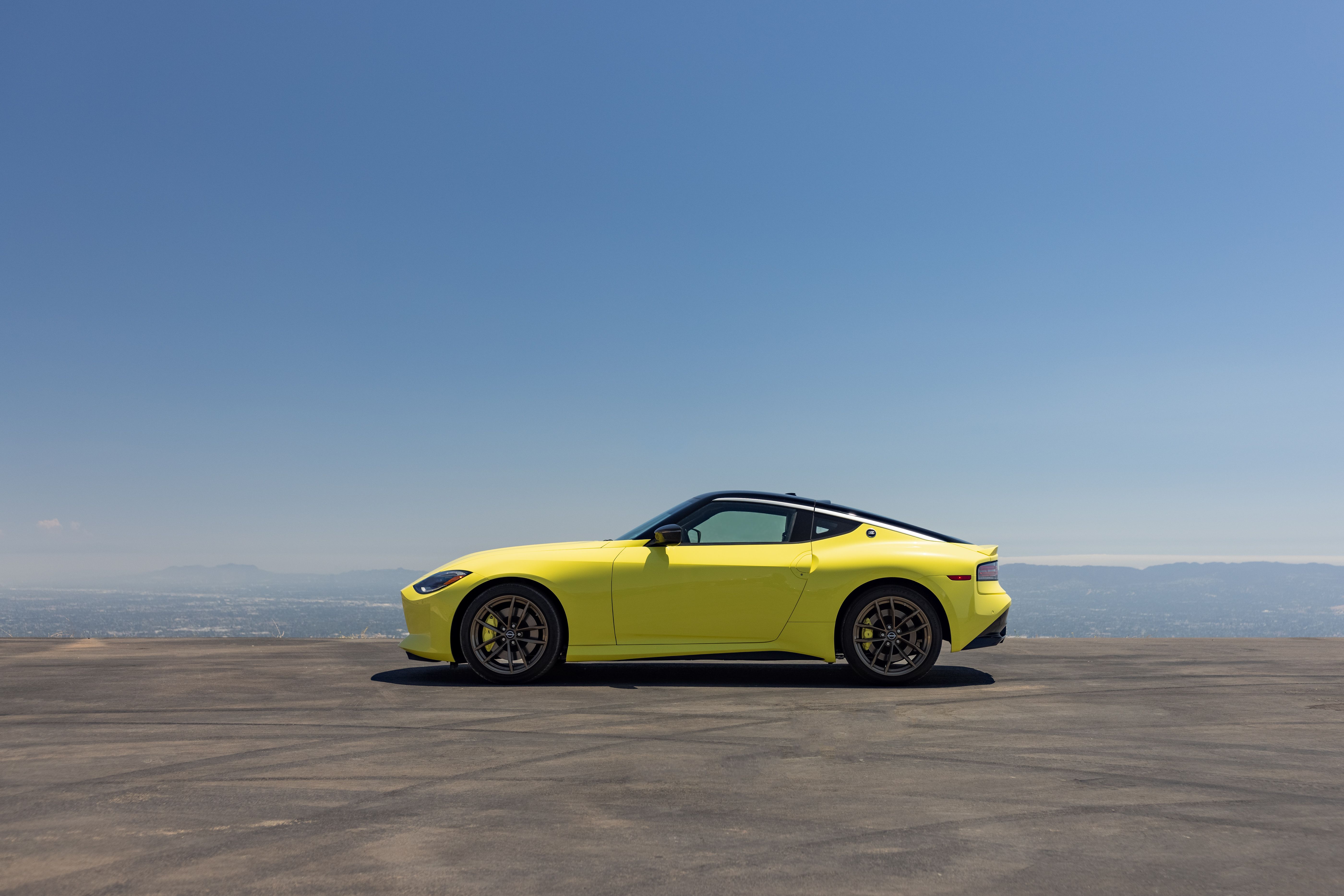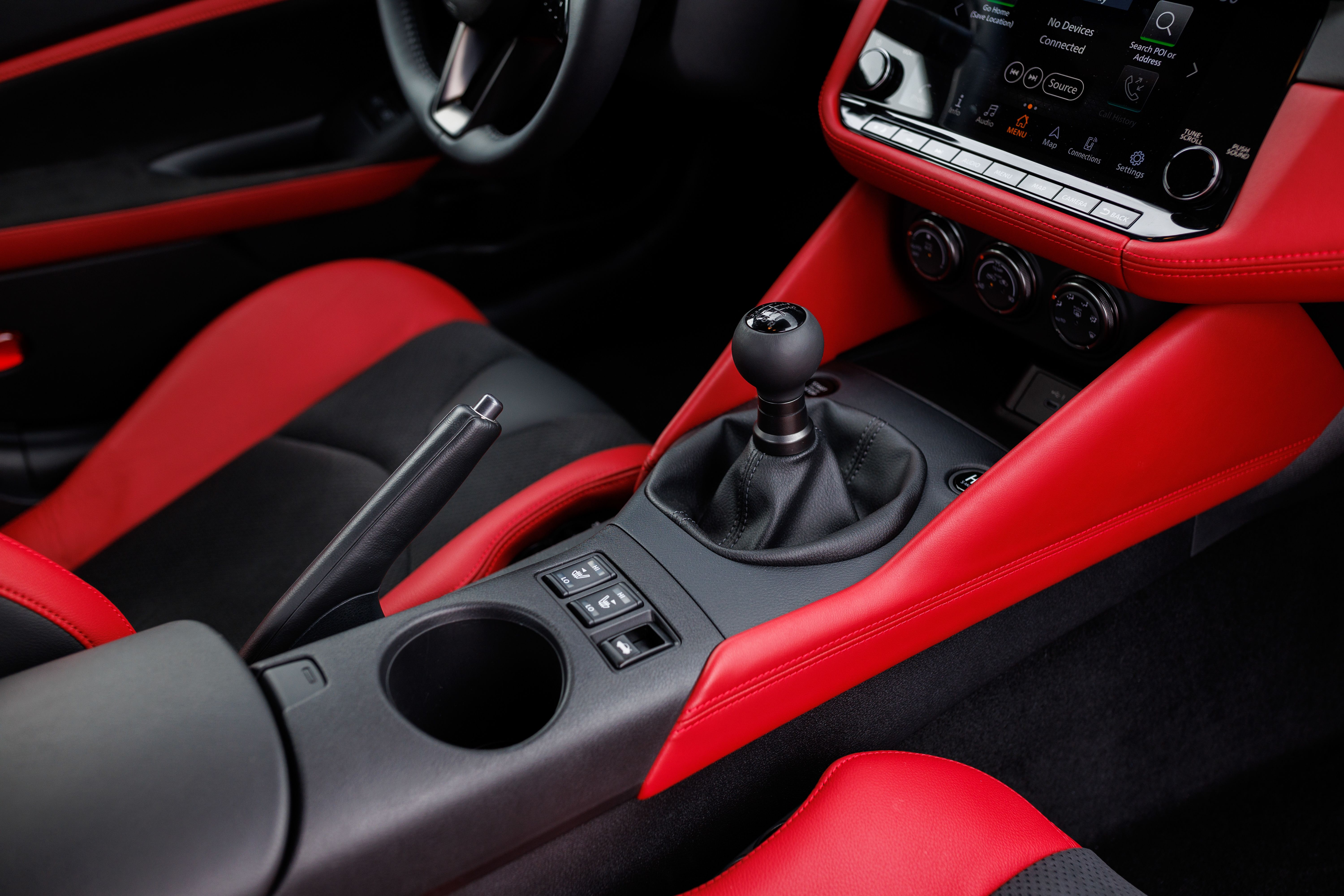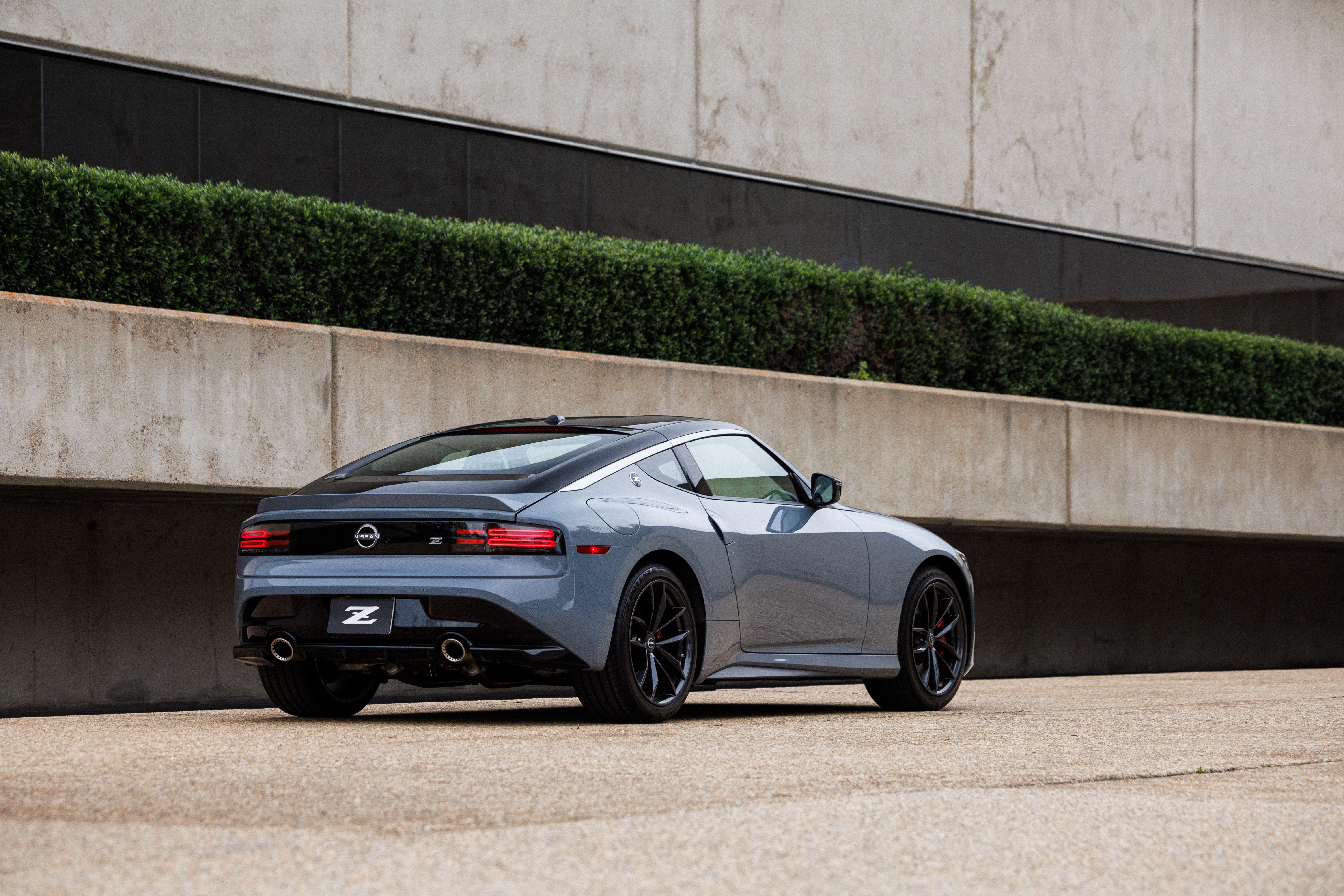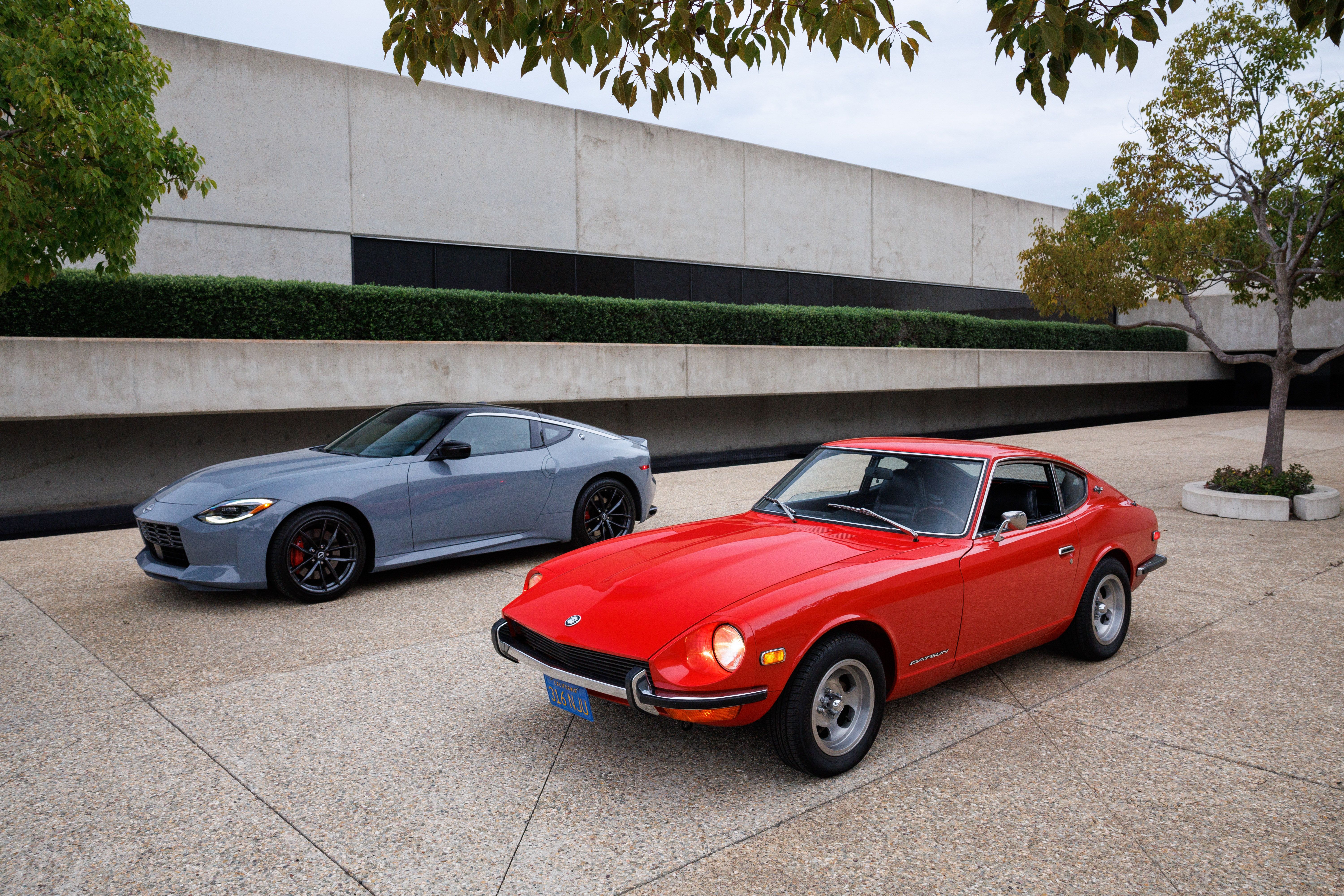The truth is that, at its core, the Nissan Z is underpinned by a platform that’s been used for decades. And, with the Infiniti engine under the hood with the very same output found in the Red Sport models, it’s easy to assume that Nissan simply cobbled a bunch of stuff together from existing parts bins into a new body and called it a day. That actually couldn’t be further from the truth, though, and you’ll be surprised to know just what happened below the skin to make the Nissan Z so new that it will drive better than any Z car that came before it.
Not Your Common Engine Swap
First and foremost, let’s look at that Infiniti engine lurking under the Z’s hood. The 350Z’s 3.7-liter V-6 pumped out 332 horsepower and 270 pound-feet of torque (or 250 horsepower in Nismo form), so this Infiniti mill with 400 horsepower and 350 pound-feet of torque is a big improvement on its own. The power figures are identical to those of the Q60 Red Sport 400, so it wouldn’t be surprising if you assume that Nissan just did a simple engine swap, but that couldn’t be further from the truth.
See, the Q60 Red Sport 400 isn’t a true-to-life sports car, so it doesn’t have to adhere to the same principles as something like the Nissan Z. That means that Nissan had to come up with a way to make this engine better, and it all came down to throttle response. In short, Nissan figured out how to route unused boost from the turbos back to the inlet side of the turbine whenever the throttle is released. This keeps the turbo spooled and ready to the second you’re back on the throttle. This translates to zero turbo lag when getting back on the throttle as you exit a curve, so there’s no dip in performance when it matters the most.
This is a different, low-tech approach compared to what other automakers are doing. Mercedes, for example, is slapping a very tiny electric motor onto the turbine shaft of its turbos to do exactly the same thing. You can find that technology in the new four-cylinder AMG C43 and AMG SL 43.
In the end, there are other tuning features that help improve the Nissan Z’s responsiveness on the road, and the next one in line is probably the most interesting.
Technology Derived From Ferrari – Yes Really
Okay, before you get too upset, no Nissan didn’t knock on Ferrari’s door and ask for a cup of technology. It did, however, follow the same theory, and it’s a good thing it did. When the Ferrari 488 Pista was revealed, we learned that Ferrari had developed a way to measure a turbo’s turbine speed. This is important because, just like your car’s engine, there’s a limit to just how fast it can spin without the risk of damage.
While most automakers predict a turbo’s speed based on engine speed, boost pressure, ambient air temperature, and a number of other factors, and then add a margin of error for safety. A turbine speed sensor like that found in the 488 Pista and now the 2022 Nissan Z can tell the car’s engine control unit exactly how hard the turbo is working. This means that engineers can extract as much as possible out of each turbo without the risk of damage, so no loss of potential.
In the Z, the turbo’s speed is displayed by the middle gauge in the three-gauge cluster on top of the dash. It reads between 0 and 250,000 rpm, with the Z’s turbo redline being 220,000 rpm.
A Pickup Truck Transmission? Kind Of
For those of you that want a new Nissan Z with an automatic transmission, then I’m sorry to tell you, but it’ll be the same 9G-Tronic nine-speed automatic found in Nissan’s pickup line, including the 2022 Nissan Titan and Nissan Frontier. But, a truck transmission in a sports car doesn’t make sense, right? Well, Nissan made some interesting changes to make that nine-speed auto worthy of sports car duty.
First off, if you were to lay out the guts of the Z’s automatic next to the guts of a Titan automatic, you’d find that they are practically identical inside. However, the transmission case is completely different, with the Z’s transmission hardware being housed inside a new, lightweight magnesium case. This new case sheds a total of 44 pounds of weight – something that helps to offset the weight added by the turbos and their related intake plumbing.
On top of the new case, the transmission itself is quite resilient, and can easily be adapted to different duty. So, with some shift algorithm and software changes, Nissan was able to make what is essentially the Titan’s transmission shift like a performance transmission designed for a sports car.
Manual Transmission with R34 Skyline GT-R Technology
Can you believe that while we’re talking about the 2023 Nissan Z we can talk about the technology found in the R34 Skyline GT-R and still remain on topic? It’s true, because the updated manual transmission found in the Nissan Z features a somewhat rare technology that was also found in the R34: a dual-mass flywheel with a pendulum-type torsional vibration absorber.
There’s similar hardware found linking the Z’s engine to the automatic transmission, and for the manual, it works the same way. It essentially returns absorbed energy to the powertrain instead of dissipating it as heat as would be the case with a mass damper. The gimmick here is that this is a very rare thing to find as part of a manual transmission, but it’s not Nissan’s first time doing it. A similar technology was deployed in the R34 Nissan Skyline GT-R from 1995 to 1998.
Beyond this, Nissan also revised the shifter linkage to deal with complaints about the heavy feel of the 370Z’s shifter. Factor in the revised first- and second-gear synchronizers with a new conical design and you’ve got a manual transmission that feels not only new and fresh, but pleasurable to use and much more so than that of the 370Z.
Major Platform Updates – Teaching an old Dog New Tricks
One of the biggest initial criticisms about the new 2023 Nissan Z is that it rides on the same platform that underpinned the 370Z and the 350Z that came before it. As was the case with the 370Z, the platform has evolved to make that core hardware better than ever before. This means that the new Z will be not only more capable than the 370Z but also stronger and safer.
The evolution of the Z’s platform started with new upper crash-energy load paths, a new upper radiator support, new strut-tower brace, and new firewall bracing. This essentially strengthened the front end but also cut down on flex in both the body and chassis. In the rear, Nissan engineers reinforced the entire rear hatch as well as the hatch opening and the area above the rear suspension cradle. All of this leads to an increase of 10.8-percent in torsional rigidity and 23.9-percent in overall body rigidity. This all means that the Nissan Z will be capable of improved handling and providing a more direct feel to the driver with less body or structure flex.
Suspension and Tire Enhancements
The Nissan Z’s suspension has been changed quite dramatically, with the most notable update being the new lower-friction monotube shocks. As a replacement for the 370Z’s twin-tube shocks, the reduced friction means Nissan was able to increase shock damping rate, spring rate, and anti-roll-bar rates without causing any negative side effects in terms of handling or ride quality. This means that the new Z should provide a more comfortable ride while still maintaining nimble on-road performance.
While the 370Z has staggered tires, with the rears being a bit wider than the fronts, the new Z with 18-inch wheels now has the same width tires in the front and rear. The fronts have gone from 225/50-series to 245/45-series. If you opt for the 19-inch wheels and tires, you’ll get 255/40-series tires, which reduces the stagger between front and rear, but the rears will still be a bit wider as the 275/35-series tires remain the same.
While the wider tires do increase the road contact area in the front, Nissan took things a step further by adding around 5 degrees of front caster angle. This gives the Z a stronger sense of straight-ahead feel and increases the caster trail, which ultimately makes the contact patch between the road and the tire longer. In other words, better handling and better traction.

